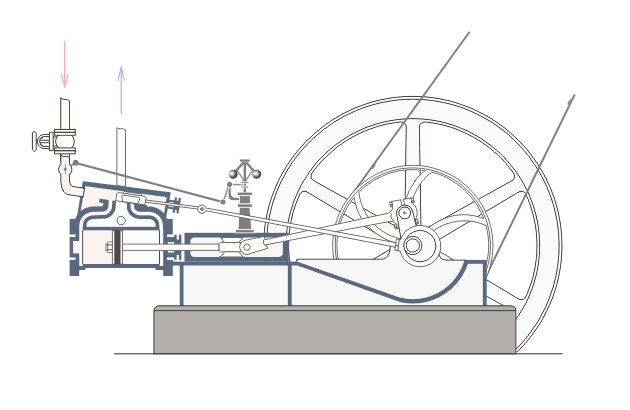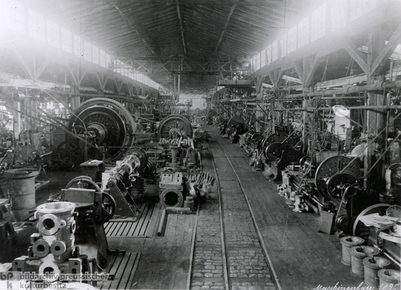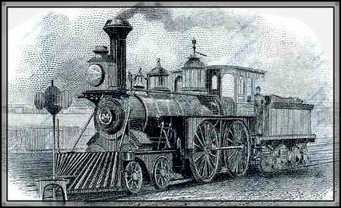Why was the steam engine so useful?
Though the steady up and down motion of the steam engine was very useful to pump water out of flooded mines, a rotary-motion could power many different types of machinery. Watt build his first rotary motion engine in 1781.
File:Steam engine in action.gif
From Wikipedia, the free encyclopedia
From Wikipedia, the free encyclopedia
Then the steam engines could be said to be the moving force behind the industrial revolution.
The engine powered not only machineries in factories or mills, which revolutionized the industry and made them able to operate regardless of wind or water power..
.. it also powered the first automatic means of transportation. By the early 1800s high-pressure steam engines had become compact enough to move beyond the factory; the first steam-powered locomotive hit the rails in Britain in 1804.
High
pressure Steam engines helped enormous on transportation. Railroads and
locomotives were probably the most important means of transportation during the
industrial revolution, but some road vehicles and ships were also driven
by the steam engine.
The world was becoming an industrialized place before the advent of steam power, but would never have progressed so quickly.
The Steam engine was definitely a turning point in history, because it had a huge impact on the people from the 18th and 19th century. It changed the everyday work: Mass productions were started, made possible by the functionality of the engine, and more jobs were created. It also made the industry more flexible, because the factories could be build everywhere, and people could travel faster in locomotives, seeing the world. Information could be passed on faster and that revolutionized the education. Also resources and other goods could be traded easier.
Even nowadays we still use steam turbines to produce electricity.
The world was becoming an industrialized place before the advent of steam power, but would never have progressed so quickly.
The Steam engine was definitely a turning point in history, because it had a huge impact on the people from the 18th and 19th century. It changed the everyday work: Mass productions were started, made possible by the functionality of the engine, and more jobs were created. It also made the industry more flexible, because the factories could be build everywhere, and people could travel faster in locomotives, seeing the world. Information could be passed on faster and that revolutionized the education. Also resources and other goods could be traded easier.
Even nowadays we still use steam turbines to produce electricity.
Editor of this website
Julianna Schiemann
Julianna Schiemann



